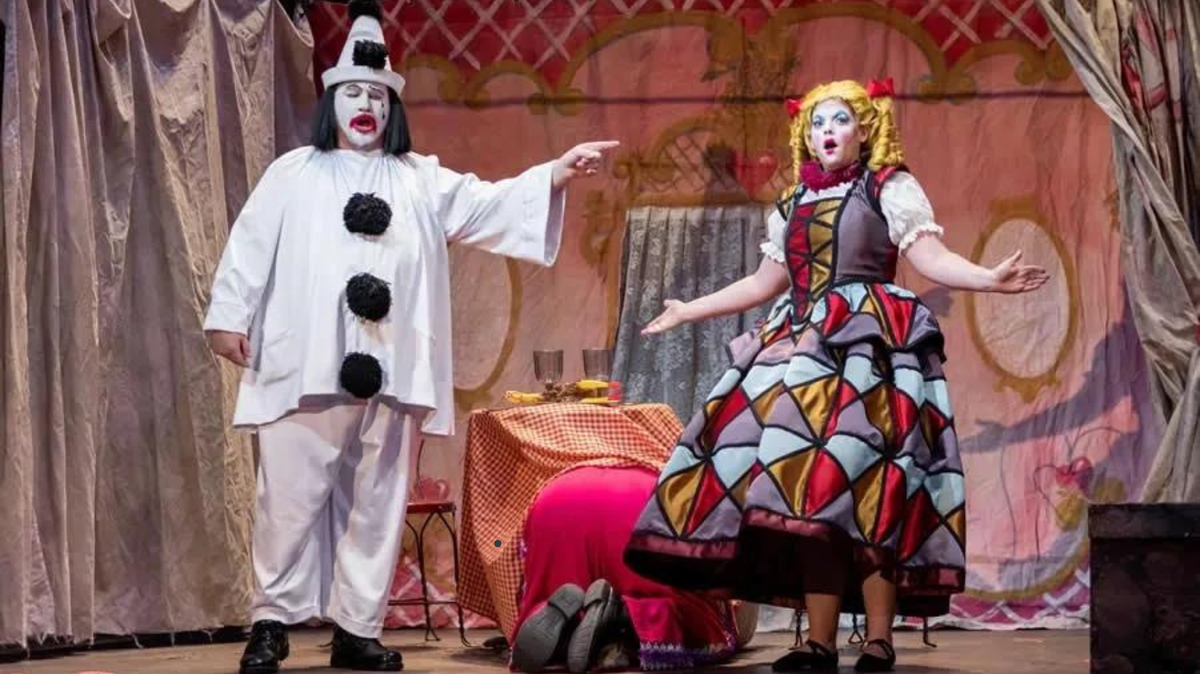All You Need to Know About Ruggero Leoncavallo’s Opera "Pagliacci"
Ruggero Leoncavallo's "Pagliacci," premiering in 1892, is a pivotal opera that explores love, betrayal, and the interplay of reality and performance.

What is "Pagliacci"?
"Pagliacci" is a one-act Italian opera by Ruggero Leoncavallo, first performed in 1892. It tells a poignant and tragic story of love, jealousy, and betrayal within a travelling theatre troupe. The opera is renowned for its powerful emotional depth and its exploration of the blurred lines between life and art.
Who composed "Pagliacci"?
The opera was composed by Ruggero Leoncavallo, an Italian musician and librettist. Leoncavallo drew inspiration from his own experiences with commedia dell'arte, a form of theatrical performance that combines improvisation and scripted elements.
What is the plot of "Pagliacci"?
The narrative revolves around Canio, the head of a commedia troupe, who discovers that his wife, Nedda, is having an affair with a local man, Silvio. As Canio prepares to perform, he struggles with his growing jealousy and heartbreak. The story culminates in a tragic confrontation during a performance, where the boundaries between the play and real life blur.
Who are the main characters?
The main characters include:
- Canio: A passionate and jealous clown who must mask his inner turmoil during performances.
- Nedda: Canio’s beautiful but unfaithful wife, torn between her feelings for Canio and her lover.
- Silvio: Nedda’s lover, who represents the possibility of true love away from Canio's control.
- Tonio: The hunchbacked clown who serves as the narrator and provides insight into the unfolding drama.
What is the significance of the title?
"Pagliacci" translates to "Clowns" in Italian, which reflects the dual lives of the characters. While they entertain audiences, they also endure personal pain and suffering. The title encapsulates the tragic irony that the clowns, who make others laugh, are themselves deeply sorrowful.
What themes are explored in the opera?
"Pagliacci" delves into several themes, including:
- Jealousy and Betrayal: The central conflict stems from Canio’s jealousy over Nedda’s affair, showcasing the destructive power of betrayal.
- The Nature of Reality vs. Performance: The opera questions the authenticity of emotions, as the characters must perform even while experiencing genuine anguish.
- The Human Condition: It highlights the complexities of love and the pain that often accompanies it, making it relatable across different cultures and eras.
How does "Pagliacci" differ from other operas?
Unlike many operas of the Romantic era, "Pagliacci" embraces realism and psychological depth. It focuses on ordinary people and their emotional struggles rather than the mythic or historical figures often depicted in traditional operas. This shift toward realism paved the way for the verismo movement in opera.
What is the famous aria from "Pagliacci"?
The aria "Vesti la giubba," sung by Canio, is one of the most famous pieces in the opera. In it, Canio laments his heartbreak while putting on a brave face for the audience. The aria conveys profound sorrow and the inner conflict of performing while suffering, making it a poignant moment in the opera.
How is the opera structured?
"Pagliacci" consists of two acts, with the first establishing the characters and their relationships and the second escalating the tension leading to the tragic climax. The structure allows the audience to witness the transition from the world of performance to the raw emotions that drive the characters’ actions.
Where is "Pagliacci" set?
The opera is set in a small Italian village, a backdrop that reinforces the themes of community and the intimacy of personal relationships. The setting reflects the lives of itinerant performers who traverse rural areas, allowing the audience to connect with their struggles.
What is the role of the prologue?
The prologue is delivered by Tonio and directly addresses the audience. He explains that the story is based on real events, emphasising the opera's focus on truth and the emotional authenticity of the characters. This direct engagement creates a connection between the performers and the audience.
How does music enhance the story?
Leoncavallo's score is integral to the storytelling, using orchestration to amplify the characters' emotions. The music ranges from lively, comedic passages to deeply moving, melancholic themes, mirroring the characters' inner turmoil. This dynamic use of music enhances the emotional resonance of the opera.
What style of music is used in "Pagliacci"?
"Pagliacci" employs a late Romantic musical style, characterised by expressive melodies, lush harmonies, and dramatic orchestral colours. Leoncavallo’s use of leitmotifs for characters and emotions also adds depth to the narrative, making the music a crucial element of the storytelling.
How was "Pagliacci" received at its premiere?
At its premiere at the Teatro Dal Verme in Milan, "Pagliacci" was met with critical acclaim and quickly captured the public's imagination. Its emotional intensity and innovative approach to storytelling resonated with audiences, ensuring its place in the operatic repertoire.
What influence did "Pagliacci" have on opera?
"Pagliacci" played a pivotal role in the development of verismo opera, influencing later composers such as Giacomo Puccini. It helped establish a new aesthetic in opera that prioritised realism and emotional truth, shaping the direction of 20th-century opera.
Are there notable recordings of "Pagliacci"?
Yes, there are numerous celebrated recordings featuring some of the greatest operatic voices. Notable renditions include performances by Luciano Pavarotti, Plácido Domingo, and Angela Gheorghiu, each bringing their unique interpretation to the iconic roles.
How is "Pagliacci" often staged?
Staging typically involves a blend of traditional commedia dell'arte elements and modern interpretations. Directors often emphasise the emotional depth of the characters, using creative lighting and set design to reflect the contrasting moods of the opera.
What is the significance of the clown motif?
The clown motif serves as a powerful symbol of the contrast between outward appearances and inner realities. The characters must don their masks to perform, even as they experience profound personal suffering. This duality captures the essence of the human experience, where people often hide their pain behind a façade.
What are some famous productions of "Pagliacci"?
"Pagliacci" has been performed at many prestigious opera houses worldwide. Notable productions include those at La Scala in Milan, the Royal Opera House in London, and the Metropolitan Opera in New York, often praised for their innovative interpretations and strong performances.
How does "Pagliacci" compare to other verismo operas?
"Pagliacci" is frequently compared to Puccini's "La Bohème" and "Tosca," both of which share themes of love, loss, and emotional complexity. While "Pagliacci" focuses on a single tragic event, Puccini’s works often explore broader societal issues, yet both effectively convey the human condition.
What is the legacy of "Pagliacci"?
The legacy of "Pagliacci" is significant, as it remains a staple of the operatic repertoire. Its themes resonate universally, ensuring its continued relevance. The opera has inspired countless adaptations in various forms of media, further solidifying its place in cultural history.
How does the opera address the concept of performance?
"Pagliacci" intricately explores the nature of performance, illustrating how characters must play their roles even when faced with personal tragedy. The opera invites the audience to reflect on the masks people wear in everyday life, suggesting that everyone has their own "show" to perform.
What are the challenges of performing "Pagliacci"?
Performing "Pagliacci" presents significant challenges for artists, particularly in conveying the emotional depth required for roles like Canio. Singers must balance vocal technicality with dramatic expression, ensuring that the performance resonates emotionally with the audience.
How has "Pagliacci" been adapted in popular culture?
The themes and story of "Pagliacci" have inspired various adaptations, including films, plays, and even musicals. Its exploration of the duality of performance and reality continues to be relevant, resonating with audiences across different mediums.
What makes "Pagliacci" timeless?
The opera’s exploration of universal themes—love, jealousy, and the human condition—ensures its timelessness. The emotional depth and psychological complexity of the characters resonate with audiences, making "Pagliacci" a powerful and enduring work in the operatic canon.





